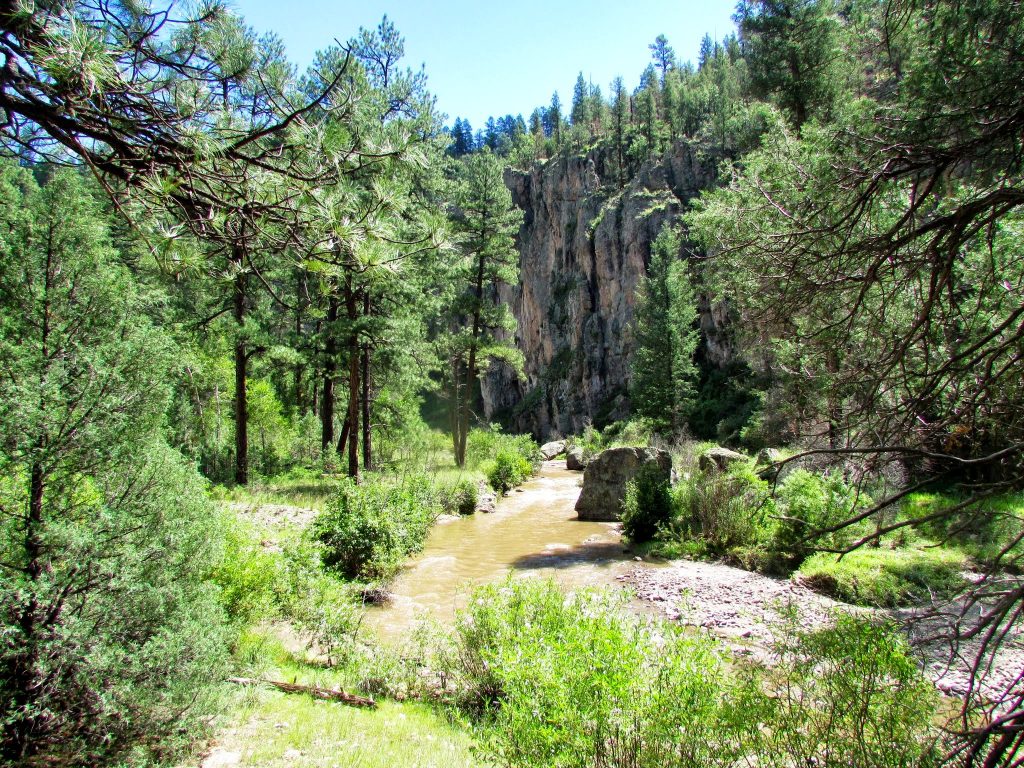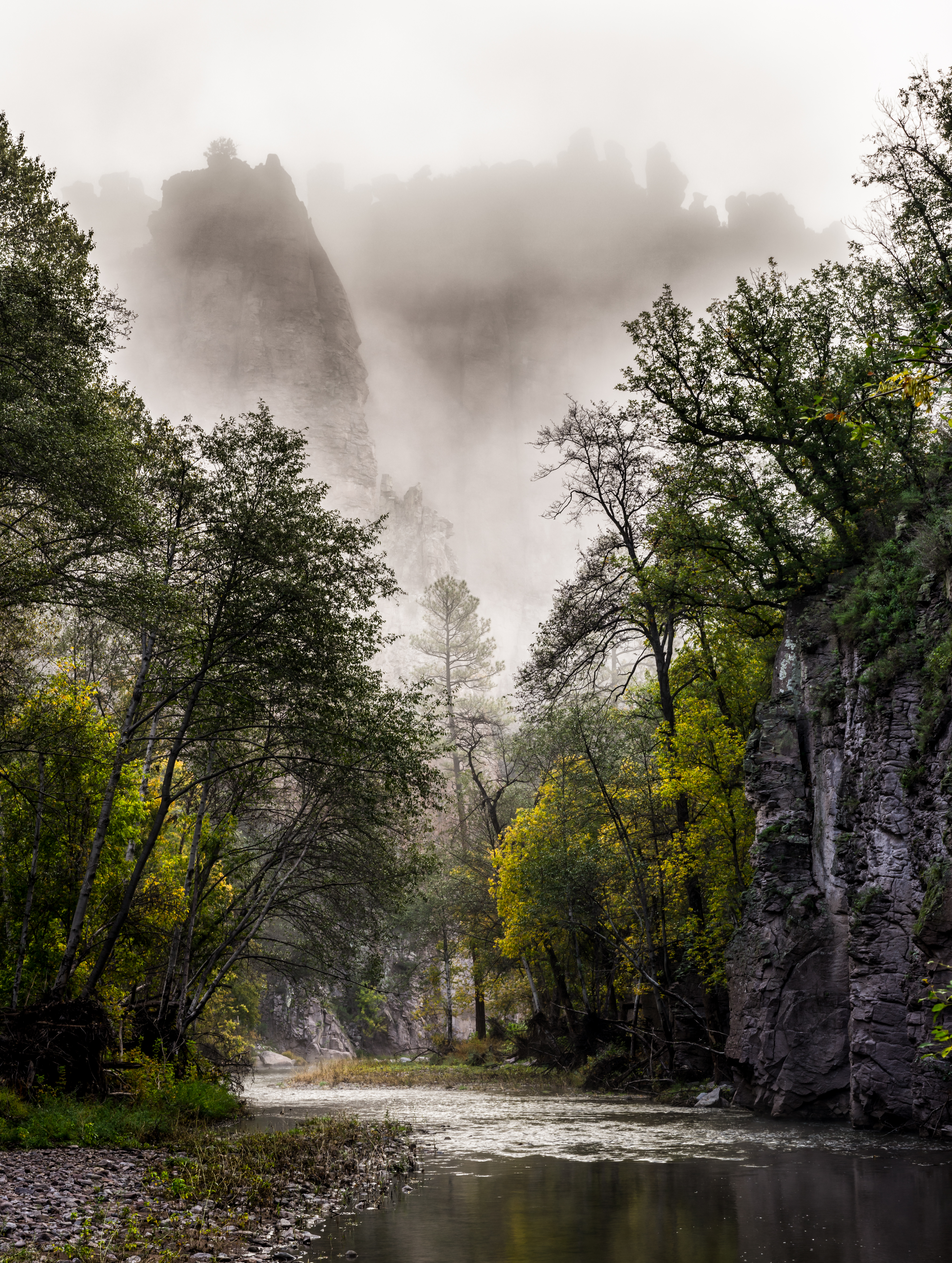Overview

History
The Gila River is the life-blood of southern New Mexico: the last free-flowing river in the state still contains an abundance and diversity of fish and wildlife. The Gila is unmatched for outdoor activities like hiking, hunting and fishing and as a place people can go to enjoy the beauty of nature. The Gila is also a witness to the history of New Mexico: its canyons, cliffs and cottonwood groves are home to historic Native American and early pioneer sites. The Gila is also a source of jobs and revenues, supporting tourism and outdoor recreation as a foundation of the local economy.
MoreWhy Wild and Scenic?
We need to use and develop New Mexico’s natural resources wisely in ways that conserve our rivers and respect our traditions and way of life. The best way to do that is by supporting the campaign to designate the Gila as a Wild and Scenic River. Once we lose the Gila, there is no getting it back.
Proven Water Conservation Measures
Proven water conservation measures can allow us to keep water in the river for New Mexicans to use and enjoy – the floaters, fishermen and farmers, and local communities. Designating parts of the Gila and San Francisco Rivers, as a Wild and Scenic River will protect what makes the region special: the places that contain the best scenery, fish and wildlife habitat, and historic treasurers. Wild and Scenic protection also gives New Mexicans a voice to manage the river for current and future generations.
The Primary Benefits of the Wild & Scenic Rivers Act
The primary benefits of the Wild & Scenic Rivers Act are that it protects the free flow of the river and protects what makes the river special. Sections of the Rio Grande and the Chama River in New Mexico already enjoy the benefits of Wild and Scenic River designation and how how special rivers can be protected and enhanced for everyone’s benefit. Wild and Scenic River designation neither limits the public from accessing public lands nor opens private lands to public access. Designation will not change the existing water rights or irrigation systems. Fishing and hunting regulations will stay the same while habitat that makes New Mexico’s outdoor traditions special will be protected.
Outstandingly Remarkable Values Recognizing the Special Values of the Gila Headwaters and Calling for Its Permanent Protection as Wild and Scenic
It is hereby declared to be the policy of the United States that certain selected rivers of the Nation which, with their immediate environments, possess outstandingly remarkable scenic, recreational, geologic, fish and wildlife, historic, cultural or other similar values, shall be preserved in free-flowing condition, and that they and their immediate environments shall be protected for the benefit and enjoyment of present and future generations. The Congress declares that the established national policy of dams and other construction at appropriate sections of the rivers of the United States needs to be complemented by a policy that would preserve other selected rivers or sections thereof in their free-flowing condition to protect the water quality of such rivers and to fulfill other vital national conservation purposes. (Wild & Scenic Rivers Act, October 2, 1968)
Scenic
- The scenery found throughout the West Fork of the Gila River – Proposed Wild & Scenic River is spellbinding. Heading upriver from the Gila Cliff Dwellings National Monument, the canyon is broad with grassy banks, blooming flowers in open meadows and ponderosa pine scattered here and there. Shortly thereafter, near where the Big Bear Canyon Trail ascends to the north, the canyon walls begin to slowly creep in, almost enveloping the river corridor in a claustrophobic atmosphere of winding spires, sheer bluff walls amid soaring ridgelines dotted with ponderosa pine, and pinon-juniper woodland.
- The Gila River is the finest natural river in New Mexico; the upper basin of the Gila River is the largest relatively intact river system south of the Greater Yellowstone; and the Gila headwaters, including the San Francisco river, compose the largest network of natural streams in the Southwest; Lastly the Gila is home to one of the largest undammed headwater watersheds left in temperate North America
Historical & Cultural
- The Gila Headwaters have outstanding historical significance, inseparable from our natural and cultural heritage as New Mexicans and Americans, including the Mogollon civilization dating to 9,500 B.C.; the home of the Apaches; Mountain Men; Buffalo Soldiers; and the birthplace of Wilderness Areas.
- Also, the access to and use of large tracts of healthy, viable, intact ecosystems and public lands are essential to the perpetuation of traditional New Mexico land uses such as hunting and fishing
Recreational
- The outdoor recreation economy in New Mexico generates nine billion nine hundred million in consumer spending annually ($9,900,000,000), two billion eight hundred million in wages and salaries ($2,800,000,000), six hundred and twenty-three million in state and local tax revenues ($623,000,000), and directly employs ninety-nine thousand people (99,000);
- The healthy public lands with quality fishing, hiking, kayaking, rafting and other recreational resources are major factors in attracting new businesses, jobs, and retirees to Grant and Catron counties and New Mexico that might otherwise locate elsewhere
Fish
- Fourteen native fishes live in the basin, including four – the desert sucker, spike dace, Gila trout and Apache trout – that occur nowhere else in the world!
Wildlife
- The Gila Headwaters are critical habitat for federally listed endangered southwestern willow flycatcher, yellow-billed cuckoo, northern Mexican garter snake, narrow-headed garter snake and the Chiricahua leopard frog
- The Gila harbors some of the greatest non-coastal breeding bird diversity and density in the United States
- The Gila Headwaters are the keystone for connectivity between the Rocky Mountains and Sierra Madre from Alaska to Mexico
- The headwaters of the Gila River are in the world’s first protected Wilderness; and the Gila headwaters is one of the largest wilderness complexes in the Americas south of the boreal forest and north of the Amazon rainforest; the Gila headwaters is the most ecologically diverse wilderness complex in North America
Geology
- The geology on the West Fork of the Gila River – Proposed Wild & Scenic River is a utopian splendor of compacted volcanic material formed into gnarly spires, elaborate hoodos, pocket caves and polished-smooth slabs of Gila conglomerate, ascending over 800 feet high. The rhyolite rock walls appear as though they were once stained-glass cathedral windows, now stone-weathered into a tapestry of the geological past. Up and down the river canyon, a broken barricade of weather-carved rocks and beehive formations jumble with the surrounding landscape. Tier upon tier of ridges and vertical volcanic columns rise above as the twisting river makes its way below.
- The volcanic activity that created what is now known as the Gila Wilderness is the combination of at least four major mega- calderas, which were active over a span of time between 35 million and 20 million years ago.
- The constant eruptions, followed by millennia of weather, pressure, erosion and time, are what today makes the geology along the West Fork of the Gila River so outstandingly remarkable
Other facts
- Of the approximately 108,014 miles of rivers in New Mexico, a scant 124.3 miles of them are designated as Wild & Scenic—or approximately 1/10th of 1% of the state’s river miles.

